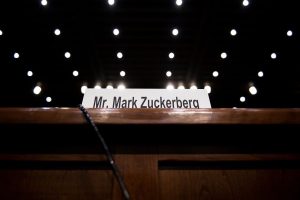A maintenance worker poking around above the ceiling panels of San Francisco’s brand-new bus terminal found the crack. It was, honestly, hard to miss. Running a foot and a half through a girder holding up the building’s roof, the crack could have led to catastrophe. The $2.2 billion Transbay Terminal, spanning three city blocks, expected to serve 100,000 travelers a day and lead the city and state into the future of transportation, had a broken spine.
So about six weeks after the long-delayed terminal opened, it closed. In late September 2018, buses from 11 regional transit systems—from Marin County to the north, Berkeley and Oakland to the east, the peninsula to the south—rerouted to the utilitarian, parking lot-like, temporary facility they had used since 2010, when the original terminal closed after seven decades of service. And the agencies responsible for constructing the new building set out to understand what happened and what to do about it.
This weekend, buses and passengers will finally roll into the Transbay Terminal again. Blame will eventually get assigned. The Transbay Joint Powers Authority, the designers, and multiple contractors are likely to sue one another. But the whodunnit is perhaps less interesting than the howdunnit, and the what-got-dun. Inspections found more cracks; figuring out what caused them would require forensics at scales ranging from the diameter of atoms to the width of city streets. The investigation involved physics, metallurgy, and the crystalline strength of steel at work. In the end, it would take less than 11 months for a team of science detectives to return one of San Francisco’s most important pieces of infrastructure to service.
The Transbay Terminal is enormous, a million square feet including a rooftop park and a “box” of a basement that’ll someday, we promise, accommodate trains including California’s perpetually-in-development high-speed rail system. Enrobed in an undulating white metal mesh, the building cuts east-west like a cyborg kaiju eel swimming among downtown skyscrapers, bridging two busy boulevards—First Street and Fremont Street.
This exploded view of the Transbay Terminal shows the rooftop garden, the bus deck, and First and Fremont streets passing below.
Transbay Joint Powers AuthorityThe spans over those streets were the problem. Or rather, one span was. Both Fremont and First were bridged by two main girders, 60-foot-long tapered I-beams, three feet wide and eight feet tall in the middle. That first crack was in one of the Fremont girders; inspections soon found one more on the other side of the same girder, and another crack in a second Fremont girder. But the girders over First Street—apparently the same design and material—were fine. The mystery deepened.
That’s roughly when Robert Vecchio got the call. The chief executive of New York-based LPI, Vecchio is a PhD engineer with a specialty in fracture mechanics and fatigue; his prior investigations include the Exxon Valdez, the 1993 and 2001 terrorist attacks on the original World Trade Center towers, and the collapse of the I-35 bridge in Minneapolis. So he’s kind of used to it. “I jumped on a plane probably the next day or so and went out to San Francisco,” Vecchio says. “It was nice to hear that there wasn’t a catastrophic event.” Nice, in other words, to get called before a building fell down.
Within a day, Vecchio was up in the ceiling with engineers from the Transbay agency and Thornton Tomasetti, the main construction contractor. Together they figured out how to install hulking hydraulic lifts to support both spans. Now they could get to work.
The brittle-fracture crack in the girder over Fremont Street was 18 inches long, through a 4-inch-thick steel flange.
LPI, IncThe first step was to remove the sections of the steel around the cracks. The girders broke along their lower flanges, the four-inch-thick horizontal plates at the bottom of the I. Engineers clambered up to the girders and slowly excised the cracked chunks with a diamond-oxide-studded cable saw, “so we could cut through it without heating it up and disturbing any of the evidence,” says Karl Frank, a civil engineer and steel-failure specialist working with Herrick, another company involved in building the terminal. “The pieces weren’t that big. They could be boxed up and shipped by truck to New York.”
That’s where LPI has its lab. The next step was to put all that steel under the microscope. Specifically, LPI and the other investigators wanted to see the surface of the crack. And what they found, at first, didn’t make sense.
“The girder that fractured looked like it had a column coming down beneath it, so it didn’t make sense it would break there,” Frank says. A column would have carried the load and prevented the cracks. “But we were only seeing the top half.” It turned out not to be a column, but a hanger, another piece of metal dangling from the bottom. Imagine a T-shape; the horizontal is the spanning girder, and the vertical is the hanger. The span was the ceiling, and supported the rooftop park above. The hanger was holding up the bus deck, the floor of the terminal’s main level.
(Just how weird this design feature was is in dispute. Frank calls it “very unusual.” Vecchio says hangers “are used in designs of all types of systems.” Pelli Clarke Pelli, the architects, did not return requests for comment.)
To attach the hanger to the girder, the design asked for a 4-by-2-inch hole to be cut through the lower flange to slot in the hanger and weld it, and then two more 2-by-2-inch holes that are either for “weld access” or “weld termination.” The language will be important for lawsuits, because what they’re called, who asked for them, whether the design specified them or they were repairs later, and a bunch of other questions are all being used by several contractors to blame other contractors for the failure.
Regardless, the construction process involved cutting away 8 inches of the flange right where it needed to be strongest. “The problem was the geometry of the weld access hole,” Frank says. “It has this corner on it, and it acts as a stress concentrator.”
A chunk of the girder, cut away for forensic investigation, shows the crack and one of the round-cornered holes.
LPI, Inc.The holes weren’t circular—they were rectangular, with rounded edges. And those corners, probably cut with a plasma cutter, acquired “microcracks” just a few hundredths of an inch deep. The investigators know they were cut with something hot, because the surfaces of the cracks were coated with a colored deposit, an oxide that could only have resulted from exposure to high heat. “You can actually see it,” Vecchio says. “It’s a very deep red, as opposed to what regular rusting of steel looks like, which is going to be more orange in color.”
Pop-ins Become Fractures
A construction worker could have used a grinder on those corners to essentially buff out the cracks. But no one did. And then the welding started. “When you’re making a weld, you’re making steel. You’re melting the base metal, the electrode, and it’s a liquid that has to cool and solidify,” Frank says. “When it does that, it shrinks.”
Or at least, it wants to. But as the metal solidifies, it’s stuck to surfaces that can’t shrink. The weld pulls on the metal around it. Here, that extra stress put tension on the microcracks, creating “pop-in fractures” about an inch long and ⅜-inch deep. “They’re cracks that just jump in and then stop,” Frank says.
Those pop-ins turned into all-out fractures. In one girder, the stress was so great that both sides of the flange fractured. “It’s a big noise, a big bang. You release a lot of energy,” Frank says. On the other girder, one side of the flange cracked but the other side stayed intact—and essentially bore the entire load of the roof above. It dropped about an inch.
Steel doesn’t usually break this way. When it fails, it usually deforms; despite its apparent solidity, steel is actually “ductile,” which means it sort of squishes, like when you bend wire. In this case, after the pop-in cracks formed, the crack seems to have moved a little, and then it tore open. The tear then became what’s called a brittle fracture, a break that Vecchio, using a scanning electron microscope, says he could see along the surfaces of the crystals that comprise the metal. Brittle fractures typically require little energy to spread; once they start, they keep going.
The ability of something—steel, in this case—to resist fracture after it cracks is called “fracture toughness.” It’s measured with what’s called a Charpy impact test, basically a very precise banging on the metal until it breaks. According to spec, the steel in the Transbay Terminal was supposed to absorb 20 foot-pounds of energy before it fractured at room temperature. It did, but testing by LPI showed lower toughness deeper inside the steel. That’s where the pop-in cracks formed, Frank says.
Clearly the steel used in the Transbay girders didn’t have high enough fracture toughness to withstand the other conditions. If the steel used in the Transbay girders had rated higher, “the fractures probably would not have occurred,” Vecchio says. “But conversely, if those pop-in cracks were not present, then it’s also likely the fractures would not have occurred.” Michael Engelhardt, a structural engineer at the University of Texas and head of an independent peer review board convened by the mayors of Oakland and San Francisco, says the metal met all the specifications in the building codes—until it encountered the welding, the holes, and the hanger.
That may also explain why the girders over Fremont Street cracked, but the ones over First Street did not. “The difference was the sequence of construction,” Engelhardt says. “On First Street, the welds were made first, and the holes were made after. On Fremont Street, the holes were made first. That turned out to be the decisive difference.”
Again, who made that decision and who actually did it is going to be a whole thing. But the upshot was that when the hangers over First Street were welded, the spans didn’t have holes yet, so there were no microcracks. So the stress of the weld couldn’t induce pop-ins, which means no brittle fracture. “That’s true of almost any type of significant failure,” Vecchio says. “It’s generally not one thing. It’s two, three, four things for something like that to occur.”
So that’s what everyone agrees happened? Architects, builders, investigators? “In general everyone was in agreement with how it happened,” Vecchio says.
Devising a Fix
That left an even bigger question: How to fix it? In the grand tradition of construction workers on high steel eating lunch, the investigators eventually settled on a sandwich.
“It was reasonably straightforward,” Engelhardt says. The girders on Fremont were missing significant chunks, cut away for evidence. They had to be restored so they’d carry as much weight as intended in the original design. And even though the First Street girders were fine, everyone agreed that whatever they did to fix the bridge over Fremont they should do over First, too. “Why take chances?” Engelhardt says.
This time, though, they’d use higher-performance weathering steel, “the steel indicated for use in bridges, that the Navy uses for ships,” Frank says. “There just happened to be some available in a fabricating shop on the East Coast that we were able to track down.”
The builders installed plates above and below the bottom flanges of all four girders, held in place with 224 heavy bolts. “A bolt hole is nice and smooth,” Engelhardt says. “So it doesn’t produce the rougher surface you’d get from cutting, and there’s no shrinkage.” It avoids, in other words, the problems that gave rise to the cracks.
To repair the original girders, new “weathering” steel in white, sandwiches the lower flange.
Thorton TomasettiThe plates are held in place with 224 heavy bolts.
TRANSBAY JOINT POWERS AUTHORITYThat’s not to say it was easy. A shop in Pennsylvania pre-drilled the new plates, but drilling at the Transbay was trickier. Fabricators had to lug a special, powerful German drill up to the ceiling, make sure it was supported so it wouldn’t fall to the street below, and measure the placement of the holes precisely enough that they’d match the ones in the plates.
But it worked, making the flange much thicker than in the original design and adding strength overall. “We did a number of fitness-to-service calculations to ensure that the girder was going to behave appropriately, if there were other cracks that could potentially be present that were undetected,” Vecchio says. The terminal was, at last, ready for people and buses again.
The Transbay Terminal was supposed to be at the heart of a plan not just for San Francisco but all of California—one that supports denser, more urban cities powered not by private automobiles but by public transit. The plazas around the terminal and the restaurants and shops in it and nearby should make that neighborhood feel more city-like than almost anywhere else in San Francisco. The closure of the terminal came after concerns about the steel and construction of a new section of the San Francisco-Oakland Bay Bridge, and a nearby residential skyscraper literally tilting to one side. So the terminal’s failure to do the most basic thing buildings are supposed to do—stand, not fall—was especially embarrassing. Cities are supposed to be able to build more city, to create infrastructure that better serves the people who live and work in them. At the Transbay Terminal, all that almost fell apart.
More Great WIRED Stories
- The radical transformation of the textbook
- How scientists built a “living drug” to beat cancer
- An iPhone app that protects your privacy—for real
- When open source software comes with a few catches
- How white nationalists have co-opted fan fiction
- ? Torn between the latest phones? Never fear—check out our iPhone buying guide and favorite Android phones
- ? Hungry for even more deep dives on your next favorite topic? Sign up for the Backchannel newsletter
Adam Rogers writes about science and miscellaneous geekery. Before coming to WIRED, Rogers was a Knight Science Journalism Fellow at MIT and a reporter for Newsweek. He is the author of the New York Times science bestseller Proof: The Science of Booze.




